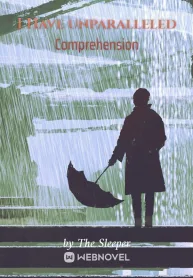On the grass ground of the palace fields, two rail lines of wrought iron were nailed on top of wooden planks, situating on top of lots of rough, sharp-edged stones the king likes to call 'track ballast'. On the side, was a mountain of coal, with buckets and shovels lying around to help bring them near.
Next to the coal, were wooden planks and wooden crates, labeled and filled with all sorts of crude metal parts. On some of the crates, a small box filled with tools was present. There were also buckets filled to the brim with water.
The equipment here is about to be used to assemble and create something magnificent, something this primitive world had never seen before, and something that could change this world, forever.
The craftsman followed the king to the palace grounds, to come over and look at what he had ordered to be built. Although the sun may have tried to stop their attempt by scorching the earth, the possibility of earning a single gold coin was too much to pass up.
A few days prior, Kant had given the minister, Alan Fleck, a few instructions. The first was to deliver some blueprints of some strange gears and devices to be built by smiths, and delivered over to the palace grounds.
Secondly, he got another bunch of stone masons, blacksmiths, and some peasants, to come to build and assemble the tracks laid on the field. The third was to invite various craftsmen from all over the city, to help him with the new invention.
The men all soon arrive near the crates, where Kant turned around to face the men to give a little speech, to specify what they were going to be doing. Kant ordered the craftsmen to break the line and gather around to hear.
"Gentlemen, I thank you all for being here today, to help me create the world's first train, which for the purposes of today, will be called a tram. The purpose of the tram is to carry a group of people from one destination to another in a quick and efficient manner.
Now, the tram we will make will be utilizing a steam engine to power the machine. The piston will turn a flywheel. The flywheel itself will be connected to much smaller wheels on the tracks, allowing it to move.
On the back, there will be a coupler to connect two or more compartments together, allowing many people to ride across the tram to the area quickly, without needing to waste energy and time walking," Kant explained as the craftsmen listened in carefully. The idea that a moving vehicle amazed them.
"Now, if you have any questions, please ask them now. I will be happy to answer. All you have to do is raise your hand." A few of them raised their hands. Kant chose one person and allowed them to speak.
"Sir, what would the difference be between a tram and a train? Is there a vast difference between the two?" one of them asked.
"Well, you can think of a train as a much larger, more complicated, and more powerful version of a tram, and one that not only carries people but cargo as well. A train also needs a different system to allow it to move," Kant replied, and then moved on to the next one. He pointed at Samuel Peterson, who appeared as if he won't be able to hold it any longer.
"Excuse me sir, but is it really true we are going to be building a steam-powered transportation machine? Because I am very confused about why your majesty allowed these... metal lines, to be built," asked Samuel Peterson, the twin with the beard.
"Well, Mr. Samuel, these are what I call rail lines. Our transportation machine will be using the rail lines to move. This is because it provides a dependable surface for their wheels to roll upon, and it is much more efficient than trying to move across the ground. This particular track is 20 meters long. I hope that satisfies your question?"
"Yes sir, it does. Thank you. Anyone else?" Nobody else raised their hands, all satisfied with the answers given to them.
"All right. Now that I have cleared out any confusion, we can start the construction of the device. Now, help me unbox these crates."
With Kant's clear instructions, the craftsmen each grabbed one crate and opened it up. Parts, such as wheels, rods, and other small parts required to build a train, which Kant specified as a tram showed up.
Kant, with the help of Victor and Samuel Peterson, took one crate from the stack, placed it on the ground, and opened it up. What was inside was revealed to be a particularly new steam engine, with 4 cylinders attached to it. It was about the size of a two-seater sofa.
"This is a HeklorKloch 4CC45 Engine. It is a 4-piston compound engine with an estimated horsepower of 30, which is about 2 horses. I commissioned this engine to be built with a small new innovation integrated into the engine that makes it the perfect candidate for the job," Kant claimed.
"What are they, sir?" Victor asked, being the curious man that he is.
"This engine employs a Walschaerts Valve Gear. It is a mechanism that controls the timing and movement of the valves in a steam engine, which increases the efficiency and horsepower of the engine. This engine has a second set of rods and links that controls the timing of steam injection and exhaust from the cylinders.
Now, I am not going to go into detail about how it works, but in simple terms, the Walschaerts valve gear uses a combination of levers and rods to control the flow of steam into and out of each cylinder. This engine has two sets of valve gears, one for each cylinder.
The high-pressure cylinder is operated by the first set of valve gears, which controls the flow of steam into and out of the cylinder at the correct time. Once the steam has passed through the high-pressure cylinder, it moves to the low-pressure cylinder. You got it so far?"
"Yes sir."
"Good. Now, the second set of valve gears controls the flow of steam into and out of the low-pressure cylinder. This valve gear is connected to the first set of valve gears, and the movement of the eccentric is adjusted to ensure that the steam enters and exits the low-pressure cylinder at the correct time.
Now, to make it go in reverse, the eccentric on the crankshaft must be rotated by 180 degrees, which changes the timing of the valve gear. This can be achieved by using this lever." Kant pointed to the metal lever visible on the engine.
"This lever allows the eccentric to be rotated by hand. Once the eccentric has been rotated, the valve gear will operate in reverse, allowing the steam to flow in the opposite direction through the cylinders. With that, the engine goes into reverse. That is the first reason why I chose this."
"And the second, sir?"
"The second reason is that this engine has a condenser built into it. In the way that a compound steam engine worked, it resulted in lower pressure and temperature of the exhaust steam, making it less effective for generating power.
By using a condenser, the exhaust steam can be condensed back into the water, which creates a vacuum in the system. This vacuum helps to draw the steam through the engine more efficiently, which can increase the power output of the engine.
As a side benefit, it can also help to reduce water consumption, as the water that is condensed can be reused in the boiler." Kant explained.
With that, the men started to work on building a steam tram. They started by assembling the steam engine part of the tram, the part which allowed the whole vehicle to move. Wooden planks were nailed to make a large base in which the men could stand, and the machinery placed.
pαndα`noνɐ1--сoМ The base was fitted with the wheels first, allowing it to be stationed on the tracks. They were then placed in the steam engine, which was located at the top part of the base. They then added a mechanical brake, which used attached to a lever that can be pressed against the wheel of the tram, before the steam engine flywheel was connected to the wheels via rods and links, all metal. To add some finishing touches, the craftsmen then screwed in a few exhaust extensions.
With that, they were technically finished! Sure, the tram looks rather exposed, with it only being a wooden platform with metal wheels and an exposed steam engine with a large exhaust port that looked like a chimney. Kant filled a bucket with charcoal and water and hopped onto the platform. The platform was a little wobbly, but not too much to be a concern.
"Alright, gentlemen. We have finished building our first prototype. Now, it is time we test it to see whether it works."
Kant filled up the water tanks, placed the coal inside the boiler, and checked to see if everything was in the correct setting before lighting the coal on fire. After making sure that it was all fine, Kant took out a matchbox from his pocket, lit up a fuse, and threw it inside. The charcoal ignited into flames as Kant closed the door. The water in the boiler started to heat up and release steam.
The tram started to move. As it slowly moved forward, the platform wobbled even further. It swang a little left to right as it moved along the train tracks. Soon, it reached a speed that could be considered faster than walking distance. Although Kant was sure that it could definitely go faster, the small length of the railway forced him to stop.
When the tram came near the end, Kant pulled the brakes, forcing the tram to come to a halt. He then pulled the lever, and let go of the brakes. Soon, the tram started to thrust backward. He soon pulled the brakes again, slowing the tram down, before he put out the fire lit up by the coal, and waited for the engine to come to a full stop.
"Well gentlemen, I consider this an absolute success!" Kant proclaimed. They went on to build another platform, to get out how much weight it can truly carry, before stopping the tests altogether.
RECENTLY UPDATES







